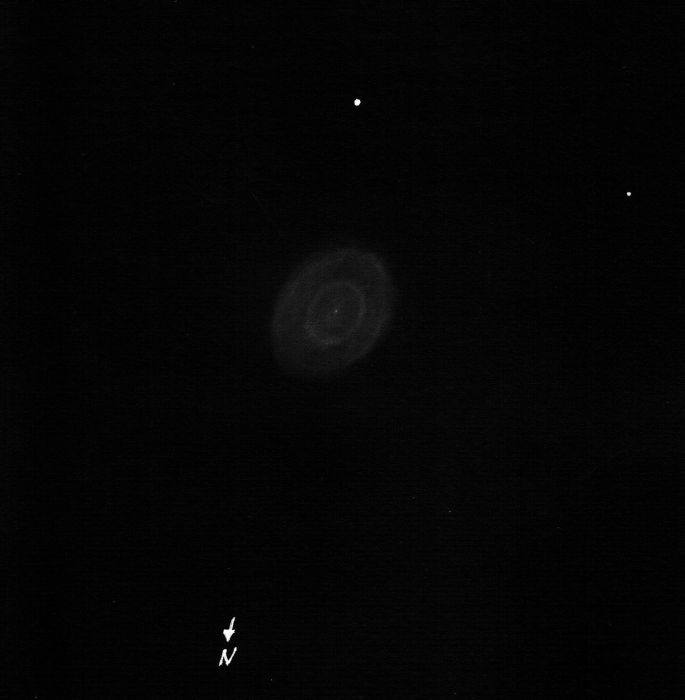
NGC 3242 “Jupiters Ghost” Hydra
Instrument: 16″
360-522x; No Filter
Place: Kreuzleshöhe 1100m,Germany
Time: 14.4.2013
fst: 6m3; SQM 21,49
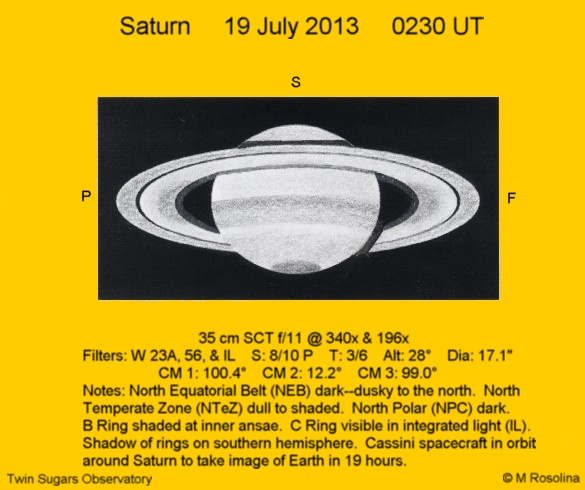
Hello,
Persistent cloudy, rainy weather here in the Appalachian Mountains has prevented me from seeing most of the best part of this Saturn apparition, but the clouds finally parted briefly earlier this month and allowed this view of the ringed world.
Because Saturn is now well past opposition it is lower in the sky at twilight and well down in altitude after dark, making good seeing imperative for a decent view. I was fortunate this evening because the air was fairly turbulent at sundown when Saturn was still above 30 degrees altitude but got steadier after dark, even though the planet was much lower.
Saturn’s rings are currently tilted at about 17 degrees which gives the observer a good view of the different rings and their features as well as the Cassini Division all the way around.
I got a good look at the North Polar Cap (NPC) but was unable to detect visually the distinct hexagonal shape visible in images.
Four moons were attending Saturn that I could see–Titan, Rhea, Dione, and Tethys. The fifth moon, Enceladus, was there too but hiding in the glare of the rings.
Saturn, among the most beautiful of celestial objects, was a pleasure to observe. There is still time to take in its beauty before the end of this apparition so good luck with the weather where you are!
I made this observational field sketch in my observatory using a template on white copy paper. Pencils used were 2B and HB graphite, charcoal (for the shadows), and a white Derwent Graphtint pencil (for the Crepe Ring).
Name: Saturn
Type: Planet
Location: Twin Sugars Observatory Friars Hill, WV USA
Date: July 19th, 2013
Clear skies,
Michael Rosolina
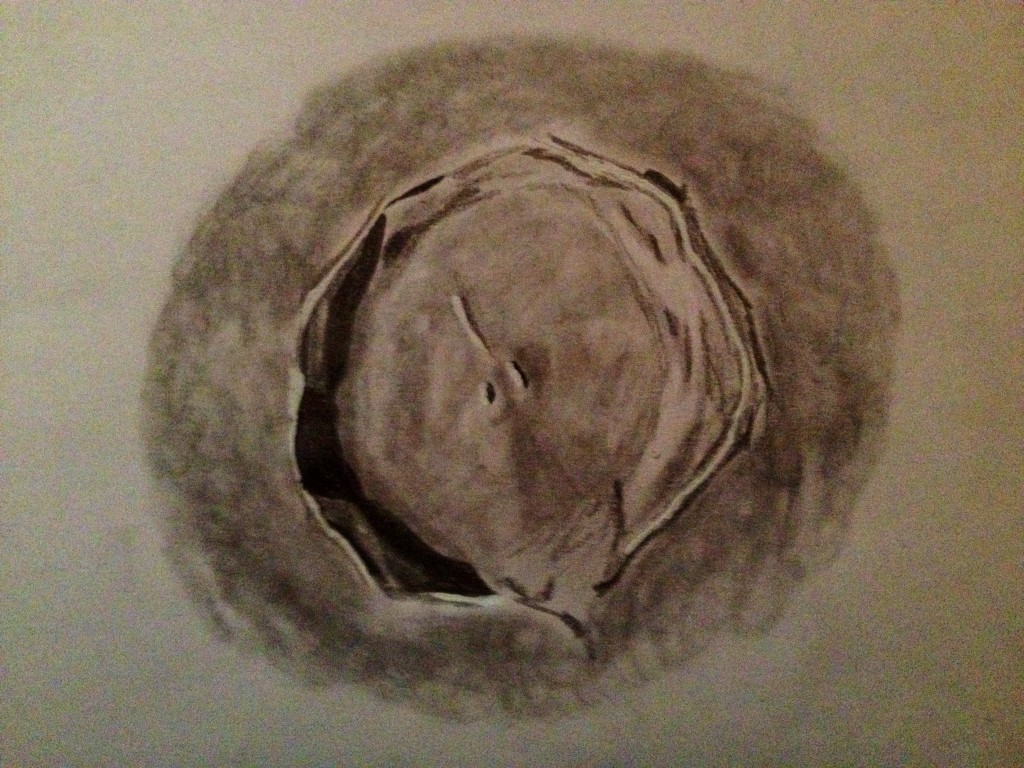
My name: Silvia Fabi
Title of the sketch: Copernicus crater
Object name: Copernicus
Object type: crater
Location: Ferrara
Date: 19/06/2013
Media: 6B, 2B, H pencils
Description: this is a very intresting crater to sketch. I like it very much. Copernicus is one of the most important crater of the moon.
Silvia
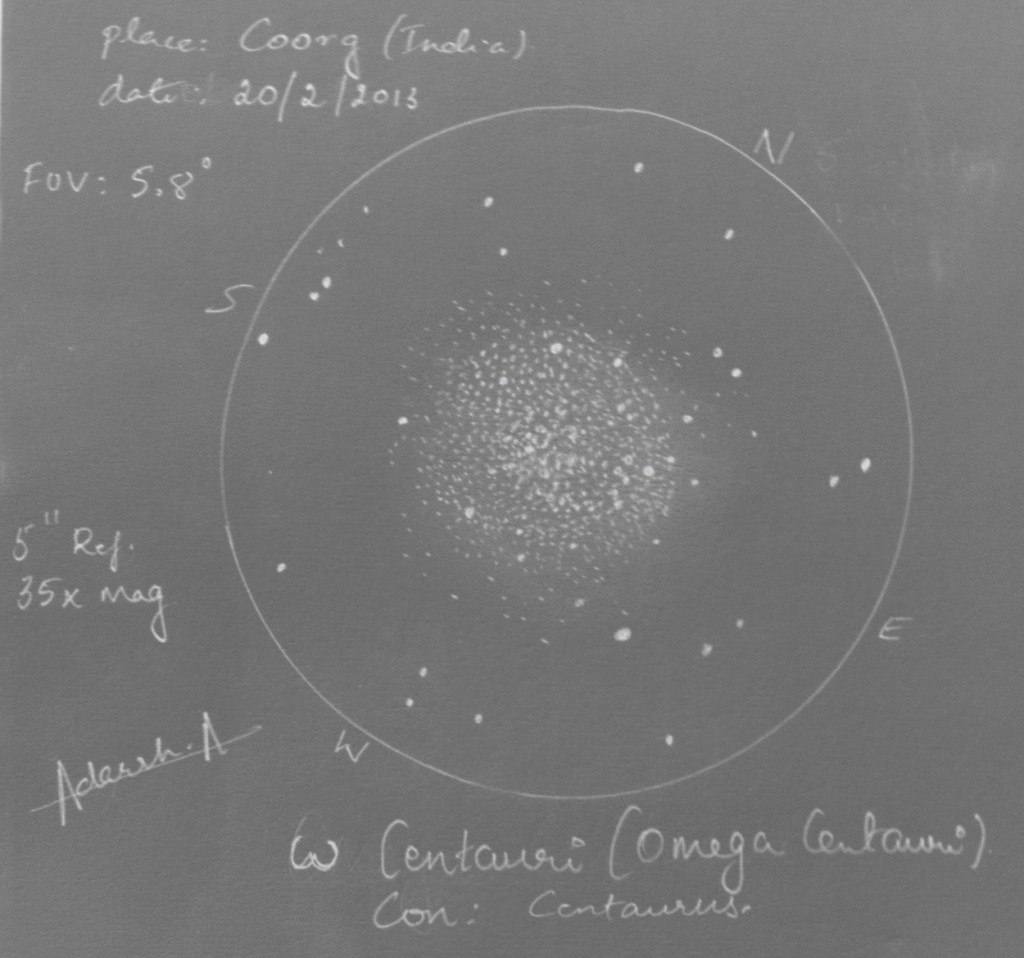
Hi,
the sketch of omega centauri is being attached here.
the details are,
Omega Centuari – The brightest Cluster visible from our Earth
Name: Adarsh A.
Object: Omega centauri
Type: Globular Cluster
Constellation: Centaurus
Location: Coorg, India
Date: 20-02-2013
Media: White paper, Graphite pencils. Inverted image.
Equipment: Celestron 130EQNewt. Reflcr.
Eyepiece: 40mm
FOV: 5.8 degrees
Sky conditions: bit hazy
Regards,
Adarsh A.
Bangalore
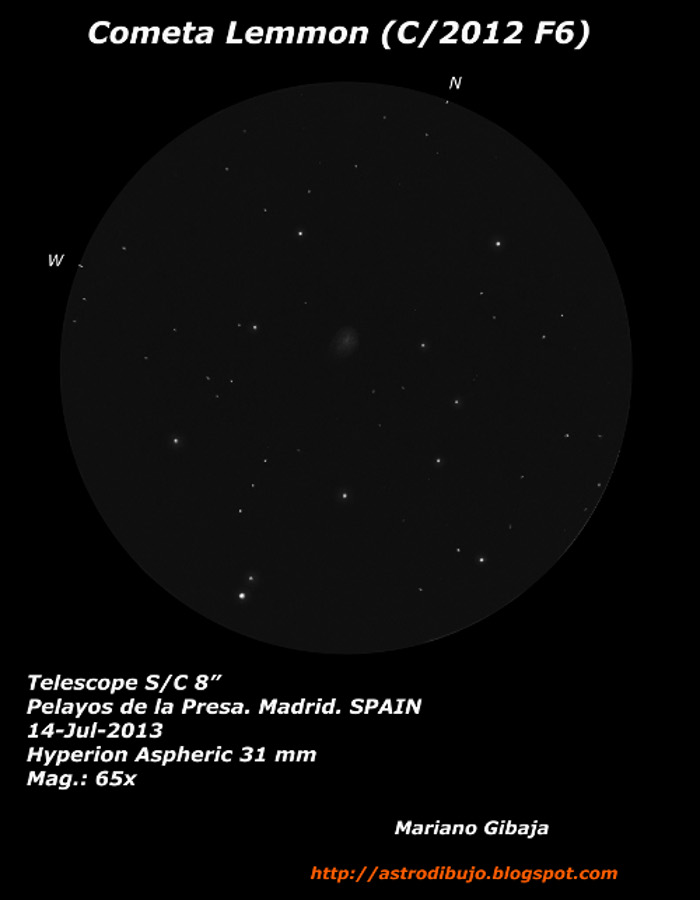
Object Name: C/2012 F6 (LEMMON)
Location: RA: 23h 23m 27.8s, Dec: +63 ° 00 ’50 ”
Magnitude: 9’7
Constellation: Cassiopeia
Observing Location: Pelayos de la Presa. Madrid. SPAIN
Date: July 14, 2013.
Time: 01:15 T.U.
Material used: graphite pencil on white paper. Inverted image and processed with Photoshop.
Celestron Telescope S/C 8″ Mount Cgt-5
Eyepiece: Hyperion Aspheric 31 mm;
Magnification: 65x.
Conditions: NEML: 5.36 (Zone 7 Cep.) Temp.: 16 º C, Humidity 50%
More information: http://astrodibujo.blogspot.com.es/
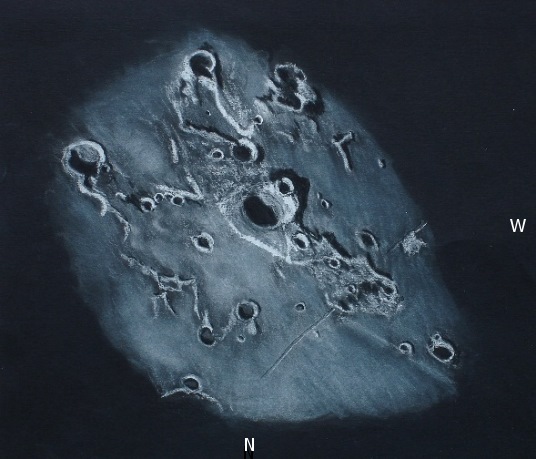
Crater Cichus (41 km.) sits on the remains of the high rim of Mare Nubium in one of the few places where the edge of this mare is clearly visible. Resting high on the rim of Cichus is small crater Cichus C (11 km.). This region is a very interesting piece of lunar real estate which includes craters young, old, concentric ringed, buried ghosts, grabens like the one in this sketch to the north called Rima Hesiodus and domes like Kies Pi just beyond the sketch area. To the west of crater Cichus is a portion of Palus Epidemiarum.
The seeing was slightly less than average but you could wait for intervals of better seeing which arrived now and again.
A fun observation and relaxing sketch with mosquito repellent applied.
Sketching:
For this sketch I used: black Strathmore 400 Artagain paper, 9”x 12”, white and black Conte’pastel pencils, white pearl eraser and blending stumps.
Telescope: 10 inch f/5.7 Dobsonian and 6mm eyepiece 241x
Date: 07-18-2013 02:05-03:50 UT
Temperature: 31°C (88°F)
Hazy, calm, humid
Seeing: mostly Antoniadi III
Co longitude: 27.3°
Lunation: 9.5 days
Illumination: 67.8 %
Frank McCabe
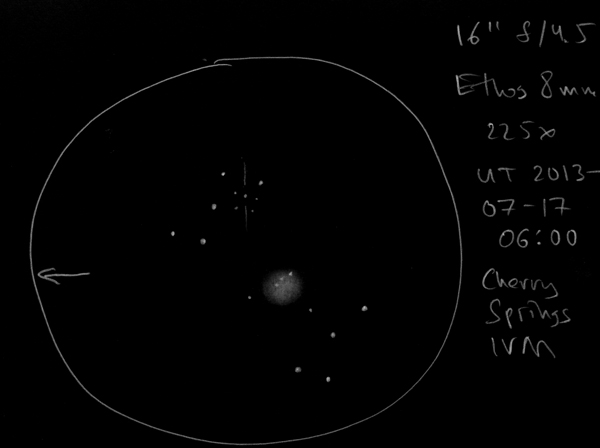
Object Name: Pluto and Palomar 8
Object Type: Planet and globular cluster
Location: Cherry Springs, Pennsylvania
Date: July 17, 2013
Media: graphite pencil, white paper, digitally inverted
Notes: 16″ Newtonian and 8 mm Ethos ocular, 225x. West left (arrow on sketch), north down. Pluto is indicated between two vertical dashes among stars. The nebulosity is the unresolved globular cluster Palomar 8. Sagittarius. The true conjunction was around 0 UT on July 15; the observation was made around 06:00 UT on July 17.